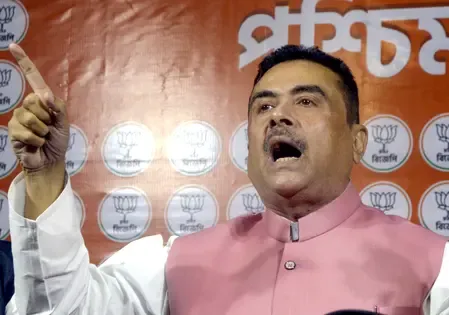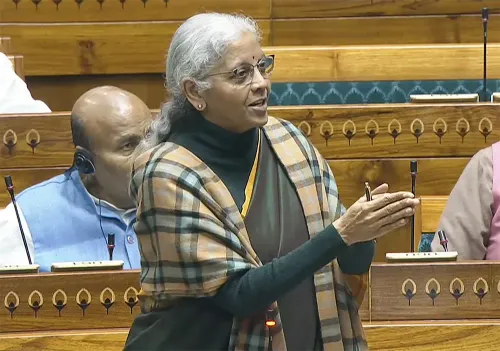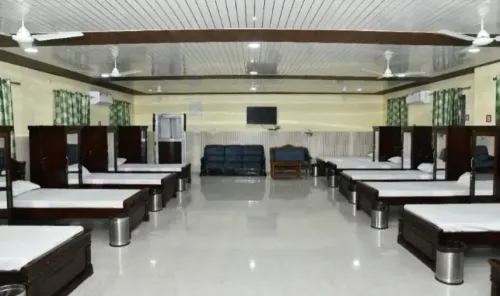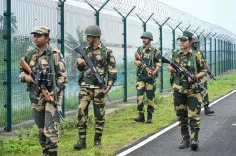What Transformative Initiatives Has the Centre Launched to Propel Inclusive Growth Under Act East?

Synopsis
Key Takeaways
- Record railway investments are transforming connectivity in the northeast.
- The Bairabi–Sairang railway line will link Aizawl to the national network.
- Significant progress in last-mile connectivity through road and bridge projects.
- Digital initiatives are enhancing access to services in rural areas.
- The PM-DevINE scheme aims to address sectoral development gaps.
New Delhi, Sep 13 (NationPress) To foster inclusive growth in the northeastern region, the Central Government has rolled out a series of revolutionary initiatives as part of its Act East vision.
The Railways Ministry is leading a significant transformation in the area, backed by unprecedented investments aimed at eliminating infrastructure deficiencies and enhancing connectivity.
As per government statistics, since 2014, railway budget allocations for the region have surged fivefold, totaling a remarkable Rs 62,477 crore, which includes Rs 10,440 crore earmarked for the current financial year.
Currently, railway projects valued at Rs 77,000 crore are in progress, including the Bairabi–Sairang railway line in Mizoram, marking the highest investment level the region has experienced.
The Bairabi–Sairang railway line, constructed at an expense exceeding Rs 8,000 crore, will link Aizawl to the national railway grid for the first time since the nation’s independence.
Featuring 143 bridges and 45 tunnels across challenging landscapes, this construction stands as an engineering marvel, with one bridge towering higher than the Qutub Minar, according to official sources.
The Ministry of Road Transport and Highways has successfully built 16,207 km of National Highways in the northeast.
“A prime example of this dedication is the greenlighting of a 15-km road project between Mangaldoi and Mazikuchi in Assam, with a budget of Rs 45.31 crore. Approved in August 2025, this project will be executed under the North East Special Infrastructure Development Scheme (NESIDS) – Roads,” the official statement elaborated.
In addition, under the Pradhan Mantri Gram Sadak Yojana (PMGSY), 17,637 road works covering 89,436 km and 2,398 bridges have been sanctioned in the region. Of these, 16,469 road works spanning 80,933 km and 2,108 bridges have been finalized, greatly enhancing last-mile connectivity in remote and rural locales.
Moreover, numerous government-funded initiatives, such as BharatNet and other programs supported by Digital Bharat Nidhi, have bolstered digital connectivity in the northeast, making Gram Panchayats service-ready and establishing mobile towers throughout the region.
The Ministry of Civil Aviation has launched the Regional Connectivity Scheme – UDAN to enhance air travel accessibility from previously unserved or underserved airports. This initiative has facilitated the creation of several routes connecting various airports and heliports across the North Eastern Region.
The Ministry of Development of North Eastern Region (MDoNER) is extending financial support to the eight northeastern states to promote developmental projects associated with infrastructure, connectivity, and communication. This is being achieved through five Central Sector Schemes: NESIDS (Roads), NESIDS (OTRI), PM-DevINE, Schemes of North Eastern Council (NEC), and Special Development Packages (SDPs).
Significantly, the Prime Minister’s Development Initiative for North East Region (PM-DevINE) is a fully centrally funded Central Sector Scheme introduced in the Union Budget 2022–23.
This scheme has a total outlay of Rs 6,600 crore for the four-year duration from 2022–23 to 2025–26.
Its aims include funding infrastructure projects in a coordinated manner aligned with the PM GatiShakti framework, supporting social development efforts tailored to the unique needs of the region, creating job opportunities for youth and women, and tackling developmental disparities across various sectors in the northeast.
A recently held ‘Rising Northeast Investors Summit 2025’ garnered Rs 4.48 lakh crore in investment interest, focusing on critical sectors such as energy, agro-food processing, tourism, textiles, healthcare, education, IT, entertainment, infrastructure, and logistics.










